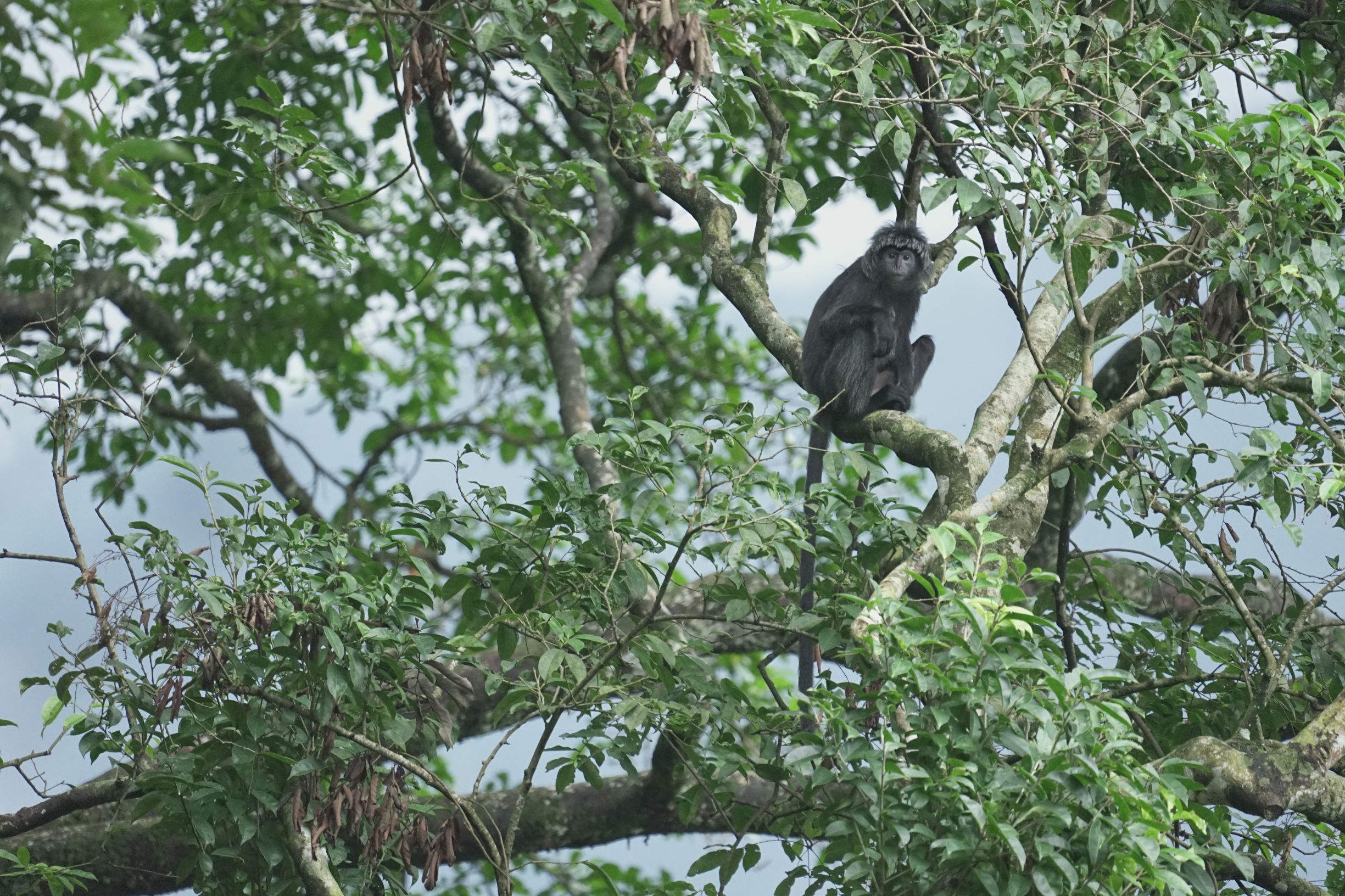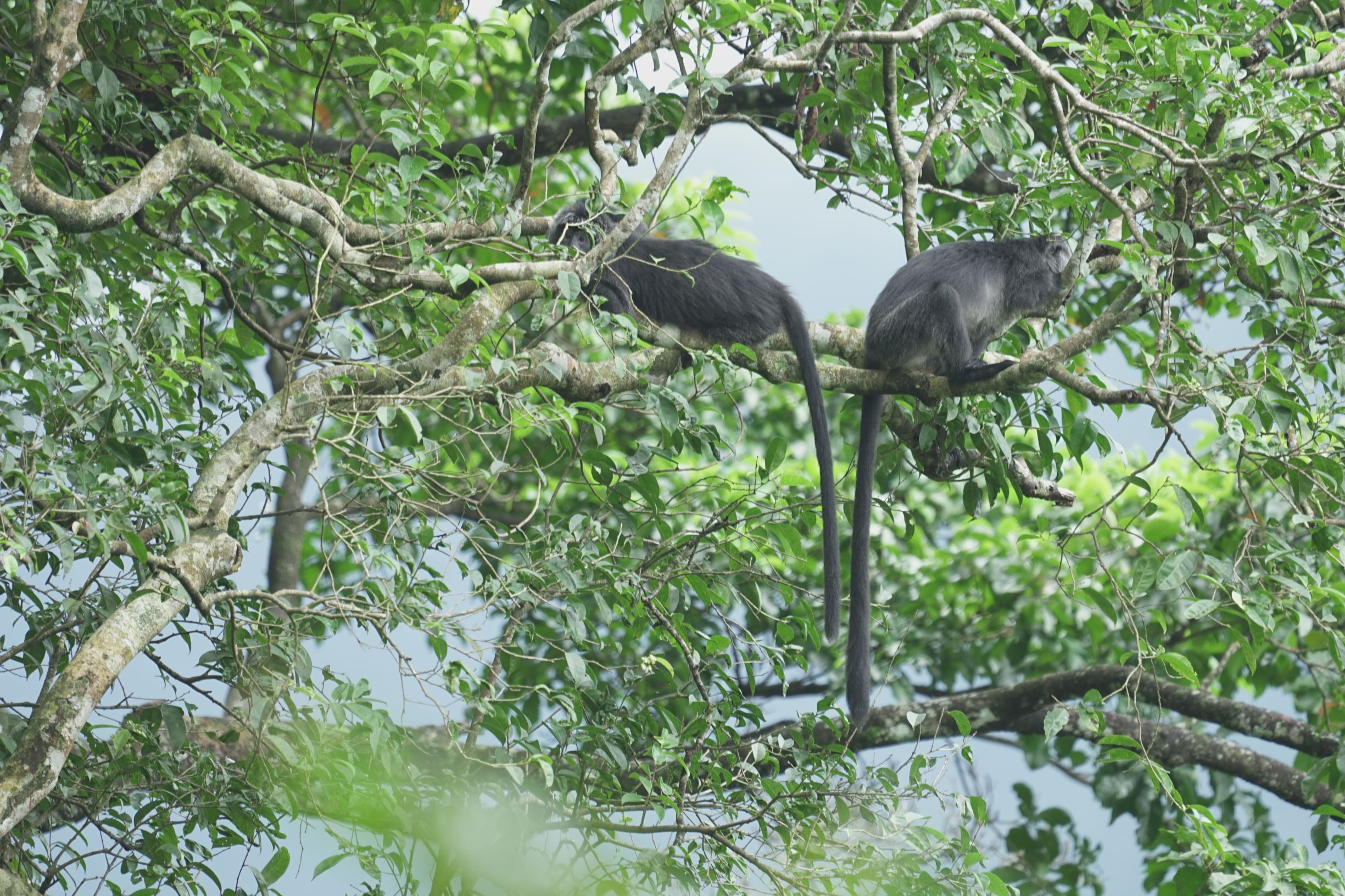By Kurnia Ahmaddin, translated by T.T Chan
The biodiversity of Petungkriyono and Lebakbarang sub-districts in the southern portion of Pekalongan Regency is very special as this area is home to both lowland and montane tropical forest. Contained within a mountain range, the high levels of rainfall in this area nourish its forests and contribute to its hydrological importance. It is therefore no coincidence that this part of Pekalongan boasts excellent habitat for the Javan gibbon (Widyastuti et al., 2020) and is in fact inhabited by approximately 800-1000 individuals (Setiawan et al., 2012).
In order to better conserve this biodiversity, the Petungkriyono Collaborative Forest Management Forum was initiated in 2018 and obtained a decree from the Governor of Central Java Province. One of SwaraOwa’s contributions as a member of this Forum is to monitor the wildlife of the forests in Petungkriyono and neighbouring sub-districts, which all form part of the same ecological landscape.
One such monitoring project of ours that involved the local community was the Javan blue-banded kingfisher survey in the Sengkarang watershed. Following that, we also collected data on five different plant and animal taxa from mid-January to mid-March 2023. This was done in collaboration with PPM Mendolo (the Mendolo Young Farmers’ Association), the Indonesian Dragonfly Society (IDS) and Biolaska UIN Sunan Kalijaga. The survey turned up 131 species of butterfly, 27 species of dragonfly, 65 species of orchid, 36 species of reptile and amphibian, and 97 species of birds. In addition, the members of PPM Mendolo conducted routine surveys from late August 2021 to February 2023, identifying 112 bird species in total. On top of this data, they also made more detailed observations of over 50 bird and five Javanese primate species.
For the local Javan gibbon population in particular, we have also involved government agencies in a survey of the forest in Sokokembang, a village in Petungkriyono. This survey took place from 11 to 14 February 2023, and was conducted together with the Central Java branch of Balai Konservasi Sumber Daya Alam (BKSDA, the Indonesian natural resources authority), CDK Wilayah 4 (part of the Indonesian forestry agency Central Java Province), and Perhutani (the Indonesian state forestry enterprise).
Camera traps and passive sound recorders
Unfortunately, relying solely on observation data is not ideal because such data can only be collected when researchers are in the field. In an effort to overcome this limitation and expand the scope of our monitoring, we installed camera traps and sound recording devices. Both types of equipment are placed in the forest for a certain duration, where they capture data automatically. Supported by Mandai Nature , Fortwayne Children’s Zoo and Chances for Nature as donor partners of SwaraOwa, 14 camera trap points and 12 passive sound recording points have been set up in the Sokokembang and Mendolo forests in the seven months since September 2022.
During this time, we installed both types of equipment for periods ranging from 10 to 36 days in order to collect approximately one month’s worth of data during the wet season. So far, the camera traps have recorded Javan leopard, Southern red muntjac and wild pigs. Our passive sound recorders also show that in the remaining forests in Lebakbarang, Javan gibbon can be clearly heard calling even at altitudes beyond 1000 m above sea level. All in all, these encounters confirm that the forests of this region still offer suitable habitat for these large mammals.
Threats to the wildlife of Pekalongan Regency’s forests
While installing our equipment and surveying the forest, we came across signs that bird poachers were still active there. In fact, we know almost all insectivorous birds to be targets of such poachers. By removing integral components of the local ecosystem, poaching risks upsetting the natural balance in the forest. In this case, the loss of these insect-eating birds will likely lead to increased numbers of insect pests. In the worst-case scenario, this could in turn cause insect infestations that have disastrous consequences for local people.
Another problem concerns Long-tailed macaques and wild pigs. Although they are a minority, there are members of the local community who regard these species as pests to be killed. If left unchecked, such hunting may unbalance the food chain and lead to predators that normally feed on these mammals coming into conflict with people. Therefore, it is our hope that hunting will be contained.
The Petungkriyono Collaborative Forest Management Forum has played a large role in ensuring that the findings of our monitoring work are effectively communicated to the various stakeholders in this region, especially policymakers.
It would not be a stretch to say that the protection of local biodiversity crucially hinges on two factors – one, on our monitoring work continuing to be carried out by an adequate number of field personnel and two, on any findings being communicated and acted on swiftly. There are examples that very clearly show this. One involves a report of ‘ghost nets’ from some time ago. The term describes nets left by bird hunters in the forest, many still spread out. They pose a grave danger to wildlife, as many species of birds and flying mammals die entangled in these nets. The nets were taken down by forum members shortly after the report was received, hence averting further damage. The second example is that of an injured leopard in the Kroyakan forest area. Not long after it was reported on 25 February 2023, BKSDA and Perhutani were on the scene and promptly rescued the leopard.










